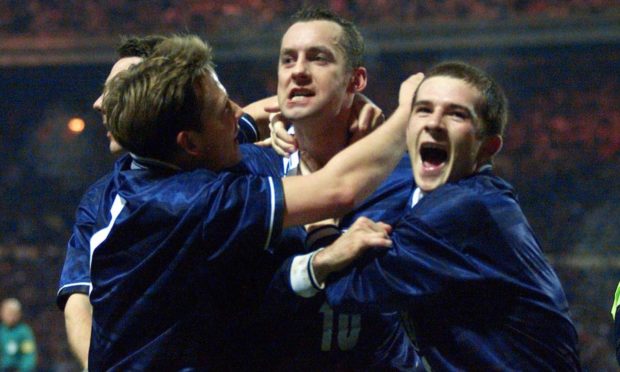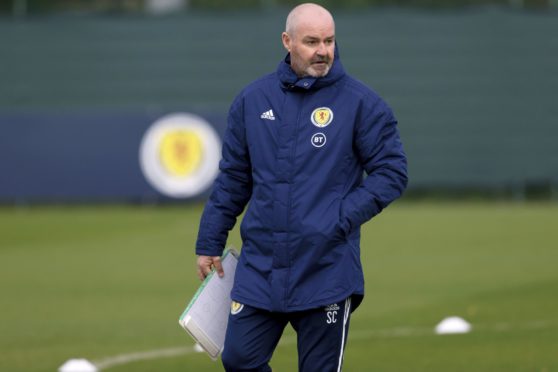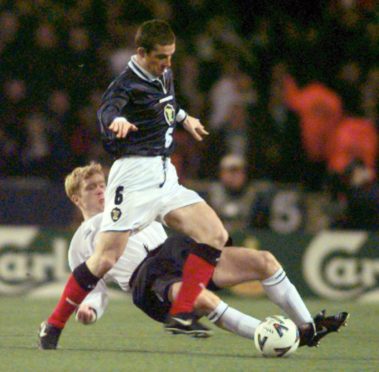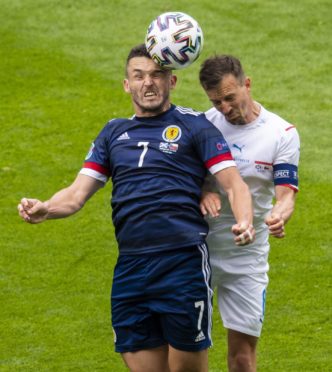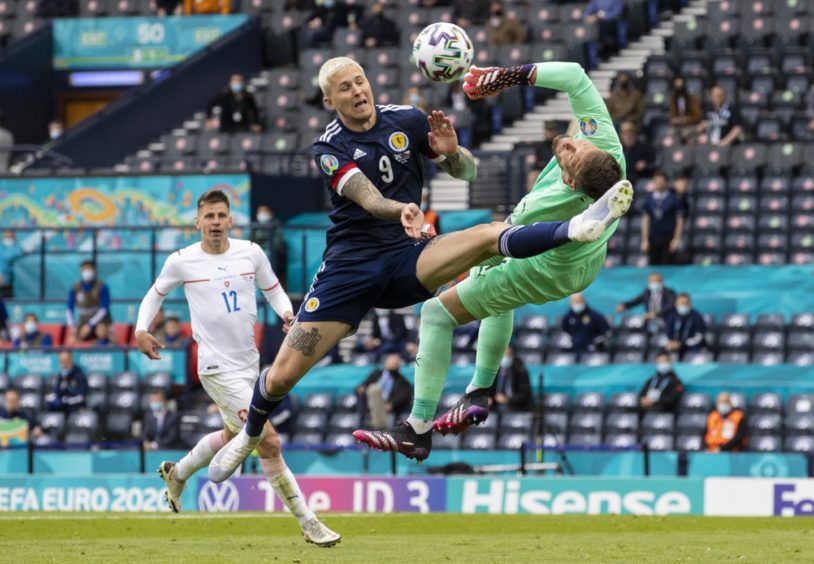Here we are, braced for the latest edition of Scotland’s biggest game in years.
Our best chance of three points has already gone awry after some comedy capers defensively and it means our two remaining chances of qualifying from the group hinge on beating England at Wembley and World Cup finalists Croatia.
There’s the hard way then there is the Scottish way.
But all hope is not lost as Steve Clarke and the players put the final touches to their preparations for their trip to Wembley.
Yes, Gareth Southgate has an embarrassment of riches to choose from in attack and you wonder what Clarke what give just to have one of them in his squad.
Fourth in the world against 44th. It is on paper a mismatch, but David slayed Goliath and Scotland are capable of rising to the occasion.
We know this because we’ve seen them do it before, nine times at Wembley to be precise.
The last of those nine wins came 22 years ago and it was a typical Scottish tale of glorious failure as Craig Brown’s side, trailing 2-0 from a first-leg loss at Hampden, beat England 1-0 in the return leg after dominating the hosts.
Had it not been for a point blank save from David Seaman to deny Christian Dailly that game would have gone to extra-time and who knows what the outcome would have been? England, like a weary heavyweight boxer, were on the ropes, hanging on for the sound of the final bell.
But alas, it was another case of ifs, buts and maybes as Scotland were left to rue a damaging defeat days earlier.
This may be a one-off encounter, but there is a feeling of déjà vu about this game with England in a comfortable position after their win against Croatia, while Scotland are heading south needing to turn their fortunes around after a morale-sapping loss at the National Stadium a few days ago.
But we love an underdog tale don’t we? Certainly, by the time Spanish referee Antonio Mateu Lahoz blows his whistle to get the game under way, you can guarantee all those negative thoughts will be cast aside, replaced by belief we CAN do this.
The question is how. Clearly, several factors need to go Scotland’s way.
As with 1999, Scotland need to rise to the occasion and is that last victory where we should be looking for inspiration.
Barry Ferguson was just 21 when he ran the show at Wembley. Up against Paul Ince, Jamie Redknapp, David Beckham and Paul Scholes in midfield, he produced what may have been his finest display in his 45 appearances for his country.
He controlled the game and played with a poise well beyond his tender years.
Clarke has a similar young option in Chelsea’s Billy Gilmour, but it would be a bold move to throw him into this game. It is more likely the responsibility to carry Scotland’s attacking threat from midfield will fall on the shoulders of John McGinn.
With 10 goals for his country McGinn is the goal threat from midfield.
In 1999, Callum Davidson – whatever happened to him? – was also a key man. He not only nullified Beckham, he offered an attacking threat of his own.
The St Johnstone manager had missed the first leg at Hampden before showing how big a miss he was with a sterling display in London. A parallel we hope is also repeated when the team is announced and Kieran Tierney’s name is on the team-sheet.
England boasted Michael Owen and Alan Shearer back then. Scotland had Billy Dodds, Neil McCann and Don Hutchison.
With all due respect to the Scottish trio, England were stronger, but it was triple threat who pushed Southgate and Tony Adams to breaking point with an outstanding combination of perspiration and inspiration.
We need the same again from the class of 2021 and it is the forward line which perhaps poses the biggest conundrum for Clarke to solve.
Does he stick with Lyndon Dykes or replace him with Che Adams? Or does he play both?
Dykes is a Clarke favourite. He works hard for the team and is an aerial threat, but he struggled at points during the season for Queens Park Rangers and was wasteful in front of goal against the Czech Republic.
There is a reason the Tartan Army are clamouring for Southampton’s Adams to get the nod. He offers pace and most importantly poise in front of goal. That could prove vital should Manchester United’s Harry Maguire start.
He is excellent in the air, but if he has a weakness it is that he can be uncomfortable if isolated in a one-on-one situation. If Clarke goes for one striker then it is no criticism of the QPR man to suggest Adams is better equipped than Dykes for that task.
The head tells you this is England’s game to lose, but the heart says it is not mission impossible by any means.
A lot has to go right, starting with the performances of the teams, but we CAN do this.
We’re about to find out whether we will.
